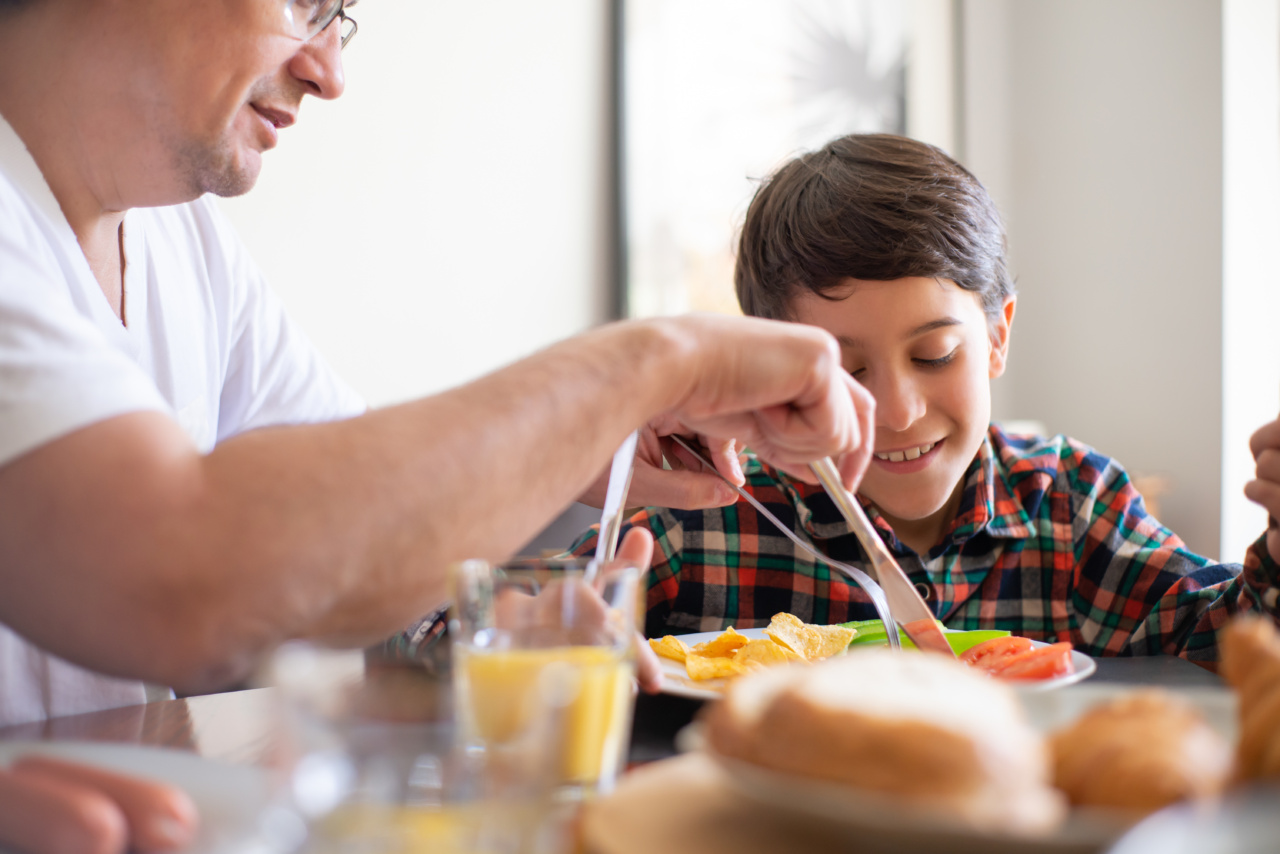Having a well-behaved and polite dog is every pet owner’s dream. One area where many dogs struggle with manners is around food.
Whether it’s stealing food from the counter or begging at the table, these behaviors can be frustrating and even dangerous. Fortunately, teaching your dog food manners can be done with patience, consistency, and positive reinforcement. In this article, we will explore some effective techniques to help your furry friend develop good food manners.
Set Clear Boundaries
When it comes to food manners, clear boundaries are essential. Dogs need to understand what is acceptable and what is not. Start by establishing designated areas for your dog during mealtime.
This can be a specific spot in the kitchen or a comfortable crate where your dog can relax while you eat. Consistently reinforce these boundaries by redirecting your dog back to their designated area whenever they try to encroach upon your space.
Wait for Permission
Teaching your dog to wait for permission before approaching food is another crucial aspect of food manners. Begin by holding a treat in your closed fist and presenting it to your dog.
If your dog tries to grab at the treat, close your hand and say “No.” Wait for a moment of calmness, then open your hand and allow your dog to lick or take the treat. Repeat this exercise several times, gradually increasing the duration your dog must wait before being rewarded. This exercise helps teach your dog self-control and patience.
Counter Surfing Prevention
Counter surfing is a common problem for many owners. To prevent your dog from stealing food from the counter, it’s crucial to make the countertop an undesirable place for them.
One simple solution is to use double-sided tape on the edges of the counter. Most dogs dislike the sticky sensation and will avoid jumping up. Alternatively, you can use pet gates or create a physical barrier to restrict access to the kitchen when you’re not present.
Remember to always remove any temptation by keeping counters clean and free of food.
Create a Positive Association
Teaching your dog to associate good behavior with food rewards is an effective way to reinforce positive food manners.
Whenever your dog exhibits good manners around food, such as sitting calmly or staying in their designated area, reward them with a small treat or a verbal praise. Gradually, your dog will learn that good behavior leads to tasty rewards, incentivizing them to repeat those behaviors.
Use Mealtime as Training Time
Mealtime can also serve as an excellent opportunity for training. Prior to feeding your dog, ask them to perform simple commands such as sit, stay, or lie down. This not only reinforces obedience but also helps your dog practice impulse control.
By associating mealtime with obedience, your dog will learn to focus on you instead of fixating on the food.
Ignore Begging Behavior
Begging at the table can be one of the most challenging food manners to address. However, giving in to begging behavior will only reinforce it. Instead, ignore your dog when they beg and redirect their attention to a more appropriate behavior.
For example, you can toss a toy or give them a chew toy to keep them occupied and engaged. Consistency is key in breaking this habit, so make sure all family members are on board and refrain from giving in to those pleading eyes.
Train the “Leave It” Command
The “leave it” command is an essential cue for teaching your dog to avoid unwanted items, including food on the floor or any potentially harmful substances. Start by holding a treat in your closed hand and presenting it to your dog.
When they show interest, close your hand and firmly say “leave it.” Wait for a moment of disinterest or look away from the treat, then reward your dog with a different treat from your other hand. With consistent practice, your dog will learn to resist the temptation of grabbing items without permission.
Practice Patience and Consistency
Teaching your dog food manners requires patience and consistency. Dogs learn best through repetition and positive reinforcement. Set aside dedicated time each day for training sessions and be consistent in your expectations.
Remember, puppies and dogs of different breeds may learn at different rates, so tailoring your training approach to your dog’s individual needs is crucial.
Seek Professional Help if Needed
If you’re struggling with teaching your dog food manners, don’t hesitate to seek help from a professional dog trainer or behaviorist.
They can provide personalized guidance and advice based on your dog’s specific behavior and temperament. Sometimes, an expert’s perspective can make all the difference in overcoming challenging food manners.
Conclusion
Teaching your dog food manners is an essential aspect of responsible pet ownership. With patience, consistency, and positive reinforcement, you can shape your dog’s behavior around food to be polite and well-mannered.
By setting clear boundaries, teaching self-control, and using positive association, you can transform mealtime from a chaotic experience into a pleasant and peaceful one. Remember, the key is to be patient, celebrate small victories, and always prioritize your dog’s well-being.






























